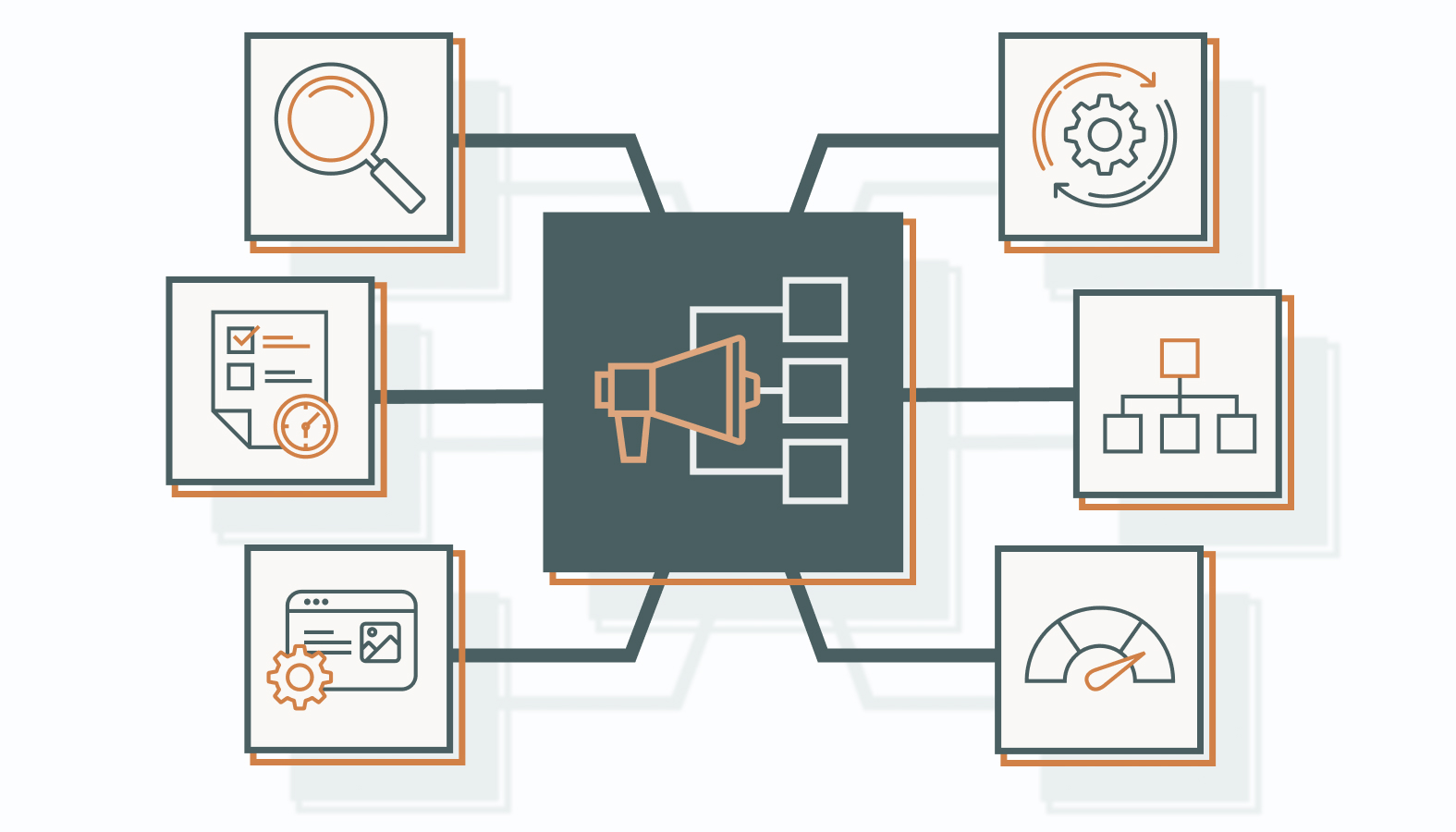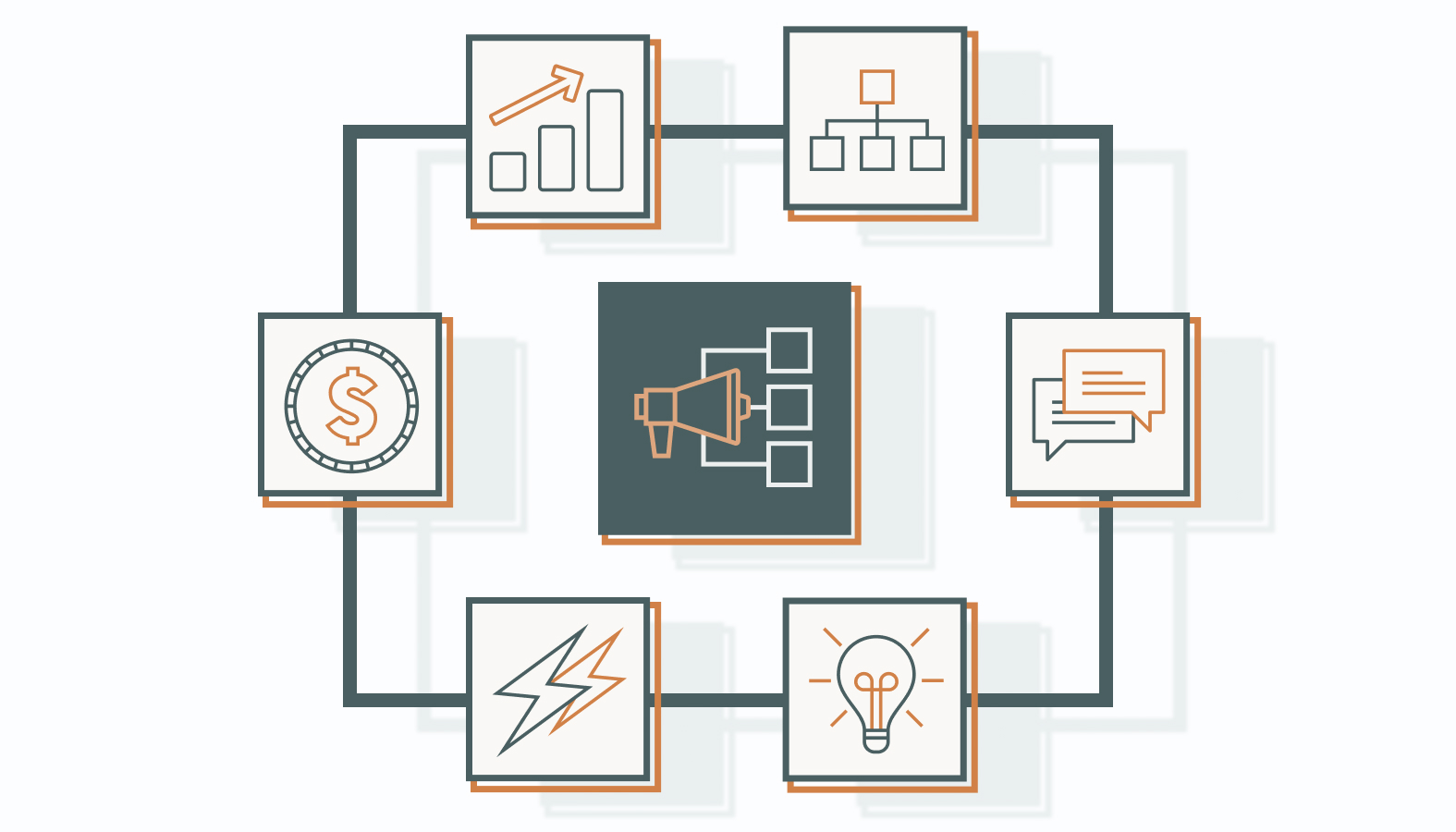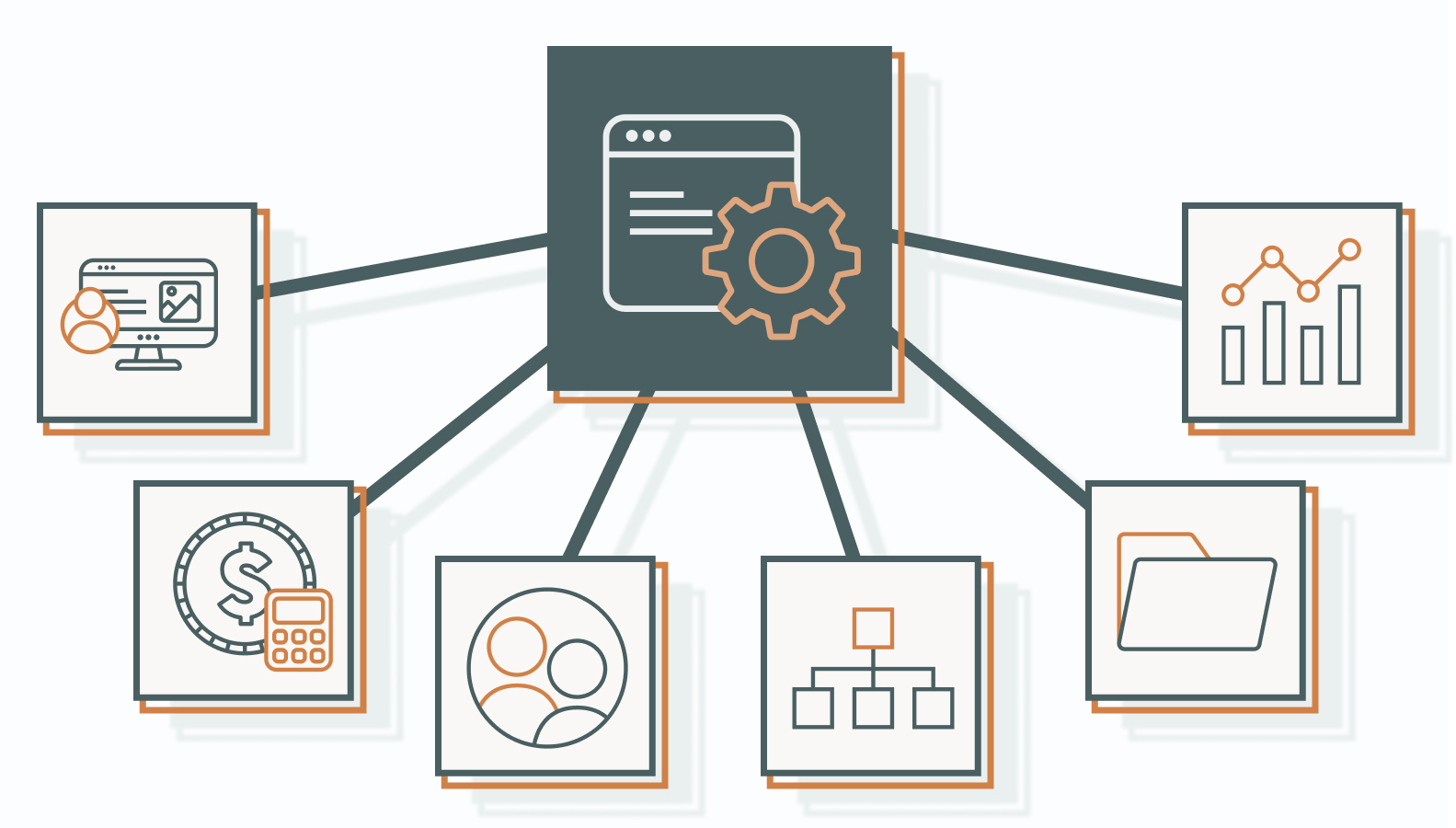Marketing resource management (MRM) is a powerful strategy that helps organizations better plan, execute, and measure their marketing efforts. It ensures you manage your marketing resources efficiently and stay competitive by enhancing creativity and strategy.
This article will guide you through the essential elements of MRM and how it can boost your marketing efficiency, improve collaboration, and ensure consistent brand messaging. You’ll learn what MRM is, its importance in modern marketing, and the best tools available.
Whether you’re experienced or new to MRM, this guide will give you the knowledge and tools necessary to elevate your marketing game. Dive in and unlock the strategies that will fuel your marketing success.
Mastering Marketing Resource Management (MRM)
Mastering resource management is a marketing superpower. MRM is strategically managing all your marketing materials and tools to maximize efficiency and impact. It is key to streamlining your operations, cutting costs, and improving team collaboration.
Let’s explore what makes MRM an essential component of modern marketing strategies.
What Is Marketing Resource Management?
MRM helps organize and optimize all the resources in your marketing toolkit. It’s like a command center where all your marketing assets, processes, and people work together to execute your campaigns flawlessly.
MRM involves a range of activities, from managing budgets and timelines to coordinating creative assets and ensuring compliance with brand guidelines. Its goal is to make sure every marketing piece fits together to boost productivity and achieve business objectives.
By efficiently organizing marketing resources, you can not only streamline your operations but also ensure every campaign is well-coordinated and impactful. This results in a cohesive brand message and a better allocation of resources.
The Importance of MRM in Your Marketing Strategy
Implementing MRM upgrades your marketing operations to a more efficient, data-driven approach. Here’s why it’s a game-changer:
Cost Efficiency and Improved Processes
MRM cuts operational costs by reducing waste and duplication, making it easy to manage spending. It also sharpens the focus on return on investment (ROI), ensuring every marketing dollar is well spent.
Better Team Collaboration
Picture a well-oiled machine where all team members are on the same page and working toward a unified goal. MRM fosters this environment by providing a centralized platform for collaboration. It facilitates smoother project handoffs, reducing friction and improving communication.
Empowerment and Flexibility
MRM gives marketing teams better control and visibility over their resources. It allows them to quickly adapt to market changes, shifting priorities, or sudden creative inspirations, making agility a crucial part of your marketing operations.
By integrating MRM into your marketing strategy, you ensure your efforts are both effective and efficient. This gives your campaigns a competitive edge.
Essential Elements of Marketing Resource Management
Understanding and implementing the core elements of marketing resource management is vital for improving efficiency and effectiveness. These elements ensure your marketing efforts are aligned, optimized, and impactful.
Let’s explore the essential components that form the backbone of a successful MRM strategy.
Comprehensive Overview of Marketing Resources
Marketing resources are the building blocks of your campaigns, encompassing everything from budgets and personnel to software tools and digital content. Having a clear understanding of your available resources helps identify gaps, streamline processes, and allocate resources where they can have the greatest impact.
Strategic Planning and Scheduling
Strategic planning is crucial in setting clear marketing objectives and aligning them with your overarching business goals. It guides your marketing efforts in a cohesive direction.
Creating a detailed marketing schedule is equally important. This schedule should outline important activities, timelines, and milestones to ensure all team members are aware of their roles and deadlines. This reduces the risk of delays and enables more efficient resource allocation throughout the campaign lifecycle.
Effective Campaign Management
Effective campaign management involves the seamless integration of planning, execution, and monitoring. It requires clearly defined goals, a comprehensive plan to achieve them, and a solid system for tracking progress.
To optimize your campaigns, rely on performance data and feedback. This approach allows you to adjust strategies in real time so your efforts remain aligned with your objectives and responsive to market changes. Regularly evaluate your campaign outcomes to identify areas for improvement and drive continuous optimization.
Optimized Resource Allocation
Resource allocation is about distributing time, money, and manpower where they will yield the highest returns. It’s a critical step in maximizing marketing ROI and ensuring efficient use of resources.
Prioritize and distribute resources based on campaign needs and strategic importance. Use methods such as cost-benefit analysis and ROI forecasting to make informed decisions about where to invest resources for maximum impact.
Streamlined Workflow Management
Standardized workflows and processes are the foundation of marketing efficiency. They ensure consistency, minimize errors and duplication of work, and streamline operations.
Design workflows that are clear, intuitive, and adaptable to changing needs. Use tools and technologies that support collaboration and streamline communication among team members. By implementing best practices, you can maintain smooth operations even in dynamic environments.
Performance Management and Reporting
Finally, tracking key performance metrics is essential for measuring the success of your marketing. It provides insights into what’s working, what’s not, and what can be improved.
Collect and analyze data regularly to inform decision-making and guide future campaigns. This ensures marketing strategies are continually refined and optimized for better results. Use comprehensive reporting tools to visualize performance trends and encourage data-driven conversations within the marketing team.
Benefits of Marketing Resource Management
Marketing resource management is far from being just another tool in your marketing toolkit. It’s a powerful strategy that maximizes marketing efficiency and effectiveness. By harnessing its potential, you can achieve a more streamlined, cohesive, and agile marketing operation that delivers consistent results and significant cost savings.
Improved Resource Allocation
MRM helps better allocate marketing resources, such as time, budget, and personnel. It offers a clear overview of available resources, allowing marketers to use them more effectively for the greatest impact.
Consider a scenario where a marketing team must launch multiple campaigns simultaneously. With MRM, they can prioritize campaigns based on importance and allocate resources accordingly, avoiding bottlenecks and ensuring all projects are adequately supported. This thoughtful allocation leads to better campaign outcomes and a higher ROI.
Better Collaboration and Productivity
Centralized MRM platforms act as a hub for improved collaboration among team members. By bringing everyone onto a single platform, the systems streamline interactions and reduce the likelihood of miscommunication and errors.
Such platforms also minimize administrative tasks by automating processes like approval workflows and asset sharing. This means marketing teams spend less time on mundane tasks and more time on creative and strategic projects, driving productivity gains and improving overall output quality.
Consistent Brand Messaging
MRM ensures brand consistency across all marketing channels by centralizing control over digital assets and brand guidelines and aligning all content with the brand’s voice and values.
Consistent brand messaging strengthens brand recognition and trust over time. Customers are more likely to engage with and stay loyal to a brand when they see a unified message across various touchpoints.
Informed, Data-Driven Marketing Decisions
MRM tools provide the insights and analytics necessary to optimize campaigns in real time. With access to detailed data, marketers can make informed decisions that improve campaign effectiveness.
For instance, if a campaign isn’t performing as expected, data from MRM tools can help identify the cause, be it audience targeting, message delivery, or channel selection. With this information, marketers can make necessary adjustments to improve campaign performance and outcomes.
Increased Marketing Agility
MRM provides the tools and insights needed to respond quickly to market changes, new trends, or unexpected challenges.
For example, if market data indicates a sudden shift in consumer preferences, MRM allows marketers to adjust their strategies and reallocate resources accordingly. This leads to better market positioning and more successful campaigns as the brand aligns itself with current consumer demands.
Significant Cost Savings
One of the most tangible benefits of MRM is the potential for significant cost savings. By optimizing resource use and reducing duplication of efforts, organizations can lower their marketing expenditures.
Consider a scenario where multiple departments unknowingly purchase similar marketing tools or assets. MRM prevents such overlaps by providing a centralized view of all resources, allowing organizations to consolidate purchases and negotiate better deals. This not only cuts costs but also enhances the overall efficiency of the marketing operation.
Tackling Marketing Resource Management Challenges
Successfully implementing MRM can transform your marketing operations, but like any initiative, it has challenges. Addressing them proactively is essential for smooth adoption and unlocking the long-term benefits of MRM.
Let’s explore these challenges and how to tackle them effectively.
Managing Resistance to Change
Introducing new systems and workflows often meets with resistance from employees. This reaction is natural as changes can create uncertainty and affect established routines. However, resistance can severely impact the successful implementation of MRM if not addressed appropriately.
To ease this transition, involve your team early and often. Comprehensive training sessions can equip employees with the skills and confidence needed to embrace new systems. Also, clearly communicate the benefits of MRM, such as increased efficiency, better collaboration, and reduced workloads, to gain their support.
Smoothing Out Onboarding Challenges
Onboarding new MRM systems can disrupt existing workflows and cause initial setbacks. To overcome these challenges, plan and execute carefully using a phased approach to allow teams to gradually adapt to new tools and processes without overwhelming them.
Start with a pilot program or gradually roll out the system to different departments. Provide ongoing support resources, such as help desks or user guides, for a smoother transition.
Navigating the Cost of Implementation
The financial investment required for MRM implementation is a big consideration. This includes the cost of the software and the potential expenses related to integration with existing systems, such as CRM or ERP platforms.
To manage these costs, create a detailed budget plan and conduct a cost-benefit analysis to highlight the long-term savings and efficiencies of MRM. This helps justify the investment and build stakeholder confidence in the ROI.
Key Features to Look For in Marketing Resource Management Software
Choosing the right MRM software is crucial for aligning with your organization’s specific needs and objectives. Here’s a guide to the essential features to consider when selecting MRM software.
User-Friendly Interface
An intuitive and easy-to-navigate interface is essential for easy employee adoption and reducing the learning curve. Choose software with a simple design, logical layout, easy access to key functions, and comprehensive user guides or tutorials for self-learning. These elements help users quickly become proficient, maximizing the software’s value to your organization.
Budget Management Features
For efficient marketing resource use, MRM software should have solid features for budgeting, forecasting, and expense tracking.
Look for budget planning tools that help set realistic financial goals, real-time expense tracking for monitoring spending, and financial reporting capabilities that provide insights into the financial health of campaigns. These tools enable marketers to stay within budget and maximize resources.
Team Management Features
MRM software should boost collaboration and productivity by managing tasks, roles, and workflows. Features such as task assignments, approval workflows, and integrated communication tools are invaluable. They ensure everyone is aligned, tasks are tracked, and projects move forward smoothly, reducing bottlenecks and improving teamwork.
Robust Integration Capabilities
MRM software should easily integrate with your existing systems, such as CRM and ERP, for seamless data flow.
Look for integration features like APIs, pre-built integrations, and compatibility with your current tech stack. These ensure data flows seamlessly across platforms, providing a cohesive picture of marketing activities and performance.
Comprehensive Asset Management
Comprehensive asset management in MRM software centralizes the storage and handling of digital assets, boosting efficiency and brand consistency.
Look for features such as advanced search functionality, which allows for quick location of assets; version control, which keeps track of revisions; and access permissions, which ensure that only authorized personnel can make changes. These features protect your assets and facilitate efficient workflows.
Performance Management Features
To drive informed, data-driven decisions, MRM software must offer in-depth analytics and reporting capabilities to support data-driven decisions and show the ROI of marketing activities.
Seek out customizable dashboards for key metrics, real-time data tracking to monitor campaign performance, and comprehensive reporting tools for detailed analysis. These capabilities empower marketers with the information needed to optimize current strategies and plan effectively for the future.
By carefully evaluating these key features, you ensure the MRM software you choose meets your organization’s specific needs, supports your marketing goals, and maximizes operational efficiency.
Top Marketing Resource Management Tools
Several popular MRM tools are available, each with unique capabilities that cater to different organizational needs. Here’s an overview of some of the top contenders in the market.
Wrike
Wrike is known for its robust MRM capabilities. It provides a comprehensive platform for managing projects and resources efficiently. It offers task management, real-time collaboration, and seamless integration with other business applications, making it a versatile choice for marketing teams.
Key features of Wrike include customizable dashboards, Gantt charts, and time-tracking capabilities, which help teams stay organized and on schedule. Users like its intuitive interface and powerful reporting tools that offer insights into project progress and resource utilization. Wrike’s flexibility and adaptability make it suitable for both small teams and large enterprises.
Monday.com
Monday.com is another popular MRM tool known for its visually engaging and easy-to-use interface. It caters to a wide range of project management needs, including marketing resource management, by offering customizable workflows and boards that are easily tailored to specific project requirements.
Unique features of Monday.com include visual timelines, automation capabilities, and a broad range of integrations with other tools, enhancing collaboration and communication across teams. Its user-friendly design suits teams of all sizes, and many users commend its flexibility in adapting to their workflows.
Monday.com’s vibrant interface is particularly appealing to teams looking for an engaging way to manage their marketing resources.
Sitecore Content Hub
Sitecore Content Hub is designed for marketers needing comprehensive digital asset management. It combines content marketing, digital asset management, and product content management in one platform.
The benefits of Sitecore Content Hub include streamlined content creation, distribution, and analysis. It also offers advanced search functionalities, version control, and collaboration tools that ensure brand consistency across channels.
Users often report improved efficiency in managing large volumes of digital assets, making it an ideal choice for businesses with extensive content needs.
Unlock the Power of MRM for Your Marketing Efficiency
Mastering marketing resource management is a journey filled with opportunities to boost marketing efficiency and effectiveness. With the insights and tools in this article, you can refine your strategies and optimize your resources for maximum impact.
However, the marketing landscape is ever-evolving, and sometimes, having a trusted partner to guide you through the complexities can help. Whether you’re just starting with MRM or looking to improve your current approach, we’re here to support you. Our experts bring extensive experience and a genuine passion for helping businesses thrive.
Schedule a candid conversation with one of our experts to discuss your challenges and goals. We offer honest, friendly advice with no pressure—just a genuine exchange of ideas to help you achieve your marketing goals.
Let’s explore how MRM can transform your marketing efforts into a well-oiled machine that delivers results.









